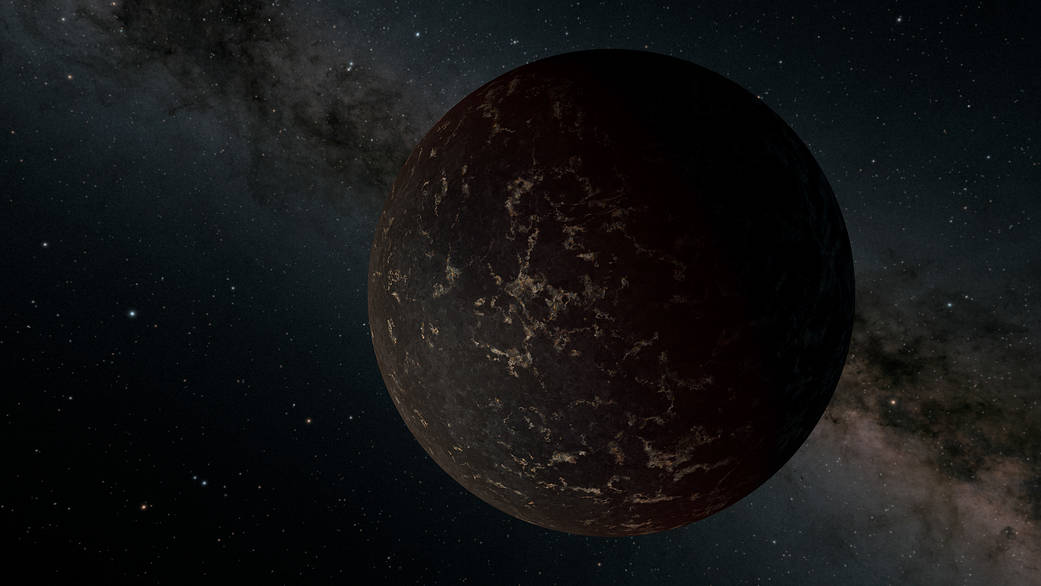Discovered in 2018 by NASA’s Transiting Exoplanet Satellite Survey (TESS) mission, planet LHS 3844b is located 48.6 light-years from Earth and has a radius 1.3 times that of Earth. It orbits a small, cool type of star called an M dwarf – especially noteworthy because, as the most common and long-lived type of star in the Milky Way galaxy, M dwarfs may host a high percentage of the total number of planets in the galaxy.
An August 2019 study using data from NASA’s Spitzer Space Telescope provides a rare glimpse of conditions on the surface of a rocky planet orbiting a star beyond the Sun. The study, published in the journal Nature, shows that the planet’s surface may resemble those of Earth’s Moon or Mercury: The planet likely has little to no atmosphere and could be covered in the same cooled volcanic material found in the dark areas of the Moon’s surface, called mare.
Image Credit:/JPL-Caltech
美国宇航局2018年通过凌日系外行星卫星调查(TESS)任务发现了这颗行星——LHS 3844b,它距离地球48.6光年,半径是地球的1.3倍。它围绕着一颗被称为M矮星的小而冷的恒星运行——特别值得注意的是,M矮星是银河系中最常见和最长寿的恒星类型,可能占据了银河系中行星总数的很大比例。
美国国家航空航天局(NASA)于2019年8月利用斯皮策太空望远镜(Spitzer Space Telescope)的数据进行的一项研究,为我们提供了一个难得的机会,让我们得以一窥围绕太阳以外一颗恒星运转的岩质行星表面的情况。发表在《自然》(Nature)杂志上的这项研究表明,火星的表面可能与地球的月球或水星相似:这颗行星可能几乎没有大气,可能覆盖着与月球表面黑暗区域(mare)相同的冷却火山物质。
图片来源:/JPL-Caltech







